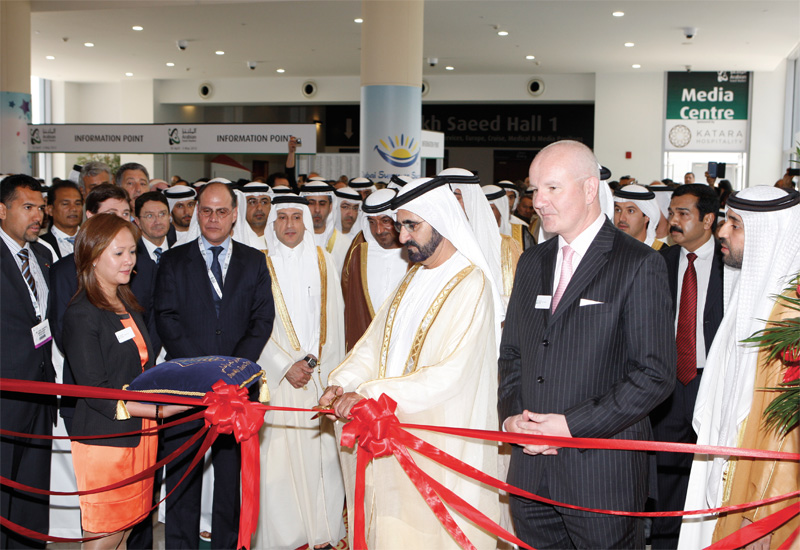 ATM 2012 was opened by HH Sheikh Mohammed bin Rashid Al Maktoum, prime minister and vice president of the United Arab Emirates and ruler of Dubai, with Reed Travel Exhibitions portfolio director Mark Walsh to his left.
ATM 2012 was opened by HH Sheikh Mohammed bin Rashid Al Maktoum, prime minister and vice president of the United Arab Emirates and ruler of Dubai, with Reed Travel Exhibitions portfolio director Mark Walsh to his left.
Top 5 hotel trends to dominate ATM
1. Online recruitment
Hotels like the new JW Marriott Marquis Dubai are using social media channels and their own dedicated web-based portals to attract jobseekers as well as garner more detailed information on candidates’ characters to match personality and ability to potential positions.
While still in its relative infancy in the region, online recruitment is growing, primarily supported by Gen Y professionals for whom social media is an essential communication tool for both business and leisure.

| Advertisement |
Other reasons to turn to online recruitment include the streamlining of applications through online candidate assessment (especially relevant to this region when recruiting from overseas), cost-saving benefits (reduced recruitment agency fees) and increased brand awareness.
2. Ultimate experiences
With tailor-made indulgences accounting for more than 50% of the US $1.4 trillion spent on luxury goods and services in 2011 (according to a Boston Consulting Group report), high-end hotels are now looking to offer more than just a high thread count for guests seeking bespoke experiences that make a hotel a destination in its own right.
From positioning the Jumeirah Creekside Dubai into a nine-storey living art museum, complete with an onsite curator, to Saudi Arabia’s Fairmont Makkah Royal Clock Tower which provides Hajj and Umrah travellers with exclusive access to its extensive library of Islamic texts, it’s all about differentiation.
Itinerary development beyond simply providing guests history-based value-add is also prompting proactive hotel operators to look more deeply at the lifestyle of their high-spend guests and tailor personal experiences accordingly for a ‘wow’ factor.
3. More regional brands
Rotana and Jumeirah led the way, and new regional brands are opening for business across the region, especially in the mid-range category. According to a Q3 2012 report from TRI Hospitality Consulting, home-grown brands are adding new inventory to their respective markets with an eye on local and regional expansion.
Smaller fledgling developers and operators are swelling the UAE portfolio. At the other end of the scale, and with a remit to take its brand outside of the UAE, The Address Hotels + Resorts is one company following in Jumeirah’s footsteps and introducing its own regional style into key international destinations.
4. Targeting China
The growth of inbound visitors from BRIC giant China has been a trend for the last couple of years, and hotels are now looking internally at services and facilities to cater to this specific market segment.
Chinese-speaking front-of-house and support staff are being recruited to deliver a seamless service from guest relations to creating menus that appeal to Chinese tastes. According to a MasterCard study, an estimated 300,000 Chinese tourists visited the UAE in 2011, spending a staggering US$334 million.
5. Rethinking loyalty
Rather than just tallying annual room nights to gauge top client performance, smart hoteliers are looking at loyalty in a new light by analysing total guest revenue. In recognising the wider potential of peripheral revenue streams, hotels are able to refine their strategy and product to maximise spend and therefore profitability. Clients with 1000 room nights are great, but those with 500 room nights, plus four quarterly meetings and a gala dinner are equally valuable.









 Search our database of more than 2,700 industry companies
Search our database of more than 2,700 industry companies









